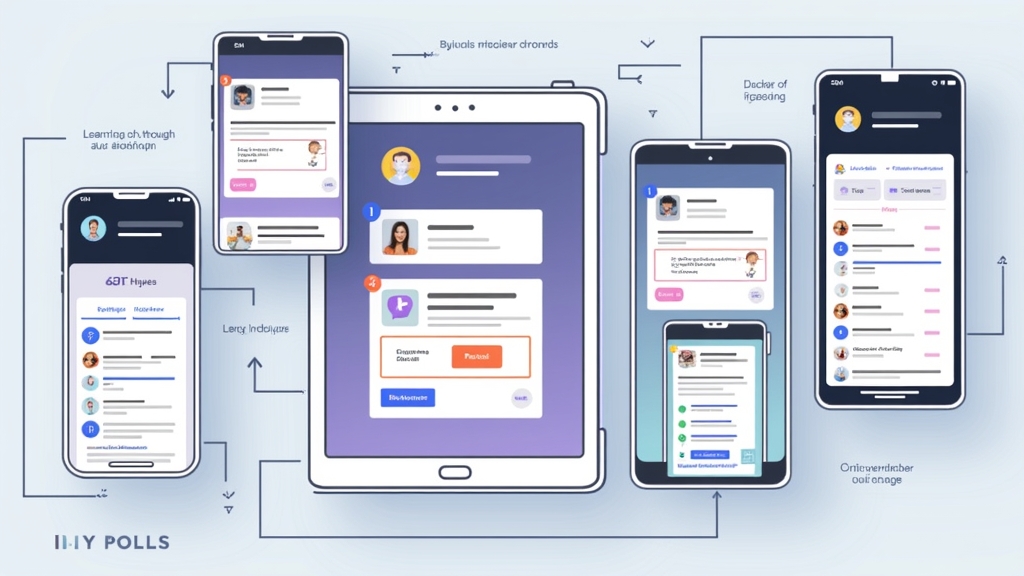Marketing: Understanding Interactive Ads Analytics for Enhanced Campaign Performance
Introduction
The Importance of Interactive Ads in Modern Marketing
In today’s digital landscape, interactive ads play a crucial role in capturing audience attention. These ads engage users by inviting them to participate actively rather than passively consuming content. This engagement can lead to higher brand awareness and customer loyalty. As businesses increasingly turn to interactive advertising, understanding how to analyze these ads becomes essential for maximizing their effectiveness.
Overview of Interactive Ads Analytics
Interactive ads analytics provide valuable insights into how well your campaigns are performing. By examining user interactions, you can identify what works and what doesn’t. This data-driven approach allows marketers like you to refine strategies, improve ROI, and ultimately enhance campaign performance.
What Are Interactive Ads?
Definition and Examples of Interactive Ads
Interactive ads are advertisements that require user interaction to deliver their message effectively. Unlike traditional static ads, they encourage users to click, swipe, or engage in some way. Examples include quizzes, polls, games, and augmented reality experiences. For instance, a beauty brand might use an interactive ad that lets users virtually try on makeup before making a purchase.
Benefits of Using Interactive Ads in Marketing Campaigns
Using interactive ads offers several benefits for marketing campaigns. First, they increase engagement rates as users are more likely to interact with content that requires their participation. Second, they provide valuable data about consumer preferences and behaviors through analytics tracking. Lastly, interactive ads can create memorable experiences that foster brand loyalty and encourage sharing among peers.
Key Metrics in Interactive Ads Analytics
Click-Through Rate (CTR)
Click-Through Rate (CTR) measures the percentage of people who clicked on your ad after seeing it. A high CTR indicates that your ad is compelling enough to prompt action from viewers. To calculate CTR, divide the number of clicks by the total impressions and multiply by 100.
Engagement Rate
Engagement rate reflects how actively users interact with your ad content beyond just clicking it—this includes likes, shares, comments, or any other form of interaction. A strong engagement rate suggests that your audience finds value in your content.
Conversion Rate
Conversion rate is one of the most critical metrics as it measures the percentage of users who completed a desired action after interacting with your ad—such as making a purchase or signing up for a newsletter. To boost conversion rates, focus on creating clear calls-to-action within your interactive ads.
Tools and Platforms for Analyzing Interactive Ads
Popular Tools for Tracking Performance
Several tools can help you track the performance of your interactive ads effectively. Google Analytics provides comprehensive insights into user behavior across various platforms while specialized tools like Hotjar offer heatmaps showing where users click most frequently on your site.
Integrating Analytics with Ad Platforms
Integrating analytics directly into ad platforms like Facebook Ads or Google AdWords allows you to monitor real-time performance metrics easily. This integration helps streamline reporting processes so you can make informed decisions quickly based on live data.
Strategies for Optimizing Interactive Ad Performance
A/B Testing Approaches
A/B testing involves comparing two versions of an ad to determine which performs better based on specific metrics such as CTR or conversion rates. By systematically testing different elements—like headlines or images—you can optimize future campaigns based on solid evidence rather than guesswork.
Tailoring Content to Audience Preferences
Understanding your target audience’s preferences is vital when creating effective interactive ads. Use analytics data from previous campaigns to tailor content specifically designed for different segments within your audience demographic.
Utilizing Feedback for Continuous Improvement
Collecting feedback from users who interacted with your ads can provide invaluable insights into areas needing improvement or adjustment over time—ensuring ongoing success in future campaigns!
Case Studies: Successful Uses of Interactive Ads Analytics
Industry-Specific Examples
Many brands have successfully leveraged interactive ad analytics across various industries; for example:
- Retail: A clothing retailer used quizzes about style preferences leading customers toward personalized product recommendations.
- Travel: An airline created an engaging poll asking travelers about dream destinations which increased social media engagement significantly.
These examples illustrate how tailored approaches yield positive results when analyzing campaign effectiveness through interactivity!
Lessons Learned from Successful Campaigns
Successful campaigns often share common traits such as clear objectives defined at inception stages along with continuous monitoring using key metrics discussed earlier! Learning from these successes enables marketers like yourself not only replicate but also innovate upon existing strategies!
Challenges in Measuring Interactive Ads Effectiveness
Data Privacy Concerns
As privacy regulations tighten globally—including laws like GDPR—it’s essential always prioritize user consent when collecting data via interactive advertisements! Balancing effective measurement without infringing upon individual privacy rights remains challenging yet necessary!
Interpreting Complex Data Sets
Analyzing large volumes of complex data generated by multiple sources poses another significant challenge! Marketers must develop skills around interpreting this information meaningfully while avoiding misinterpretations leading down unproductive paths!
Conclusion
The Future of Interactive Advertising and Its Impact on Marketing Strategy
The future looks bright for interactive advertising! As technology continues evolving alongside consumer expectations shifting towards personalized experiences—the importance placed upon robust analytical frameworks will only grow stronger! Embracing these changes now positions marketers favorably moving forward!
📢 Explore More: Continue Your Journey!
If this article helped you understand more about optimizing marketing efforts through analytics techniques check out How Data-Driven Decisions Can Transform Your Marketing Strategy! It covers powerful insights helping you grasp advanced analytical methods effectively.














![NEEWER 55W 18"/45cm Ring Light Kit [New Version], 5600K Dimmable ...](https://m.media-amazon.com/images/I/414QLqvZWLL._AC_.jpg)








